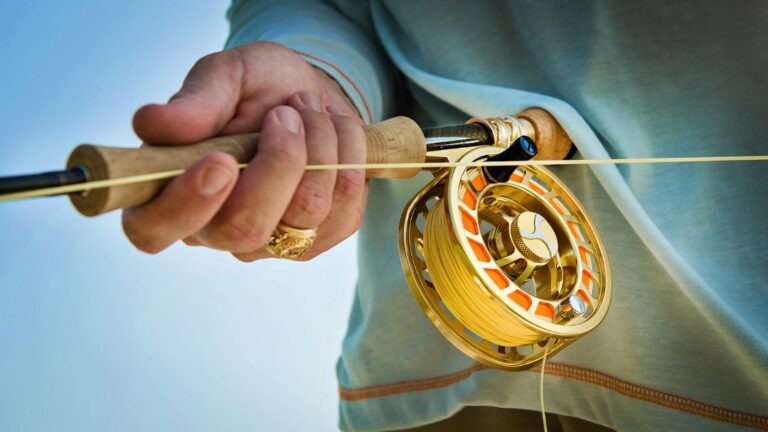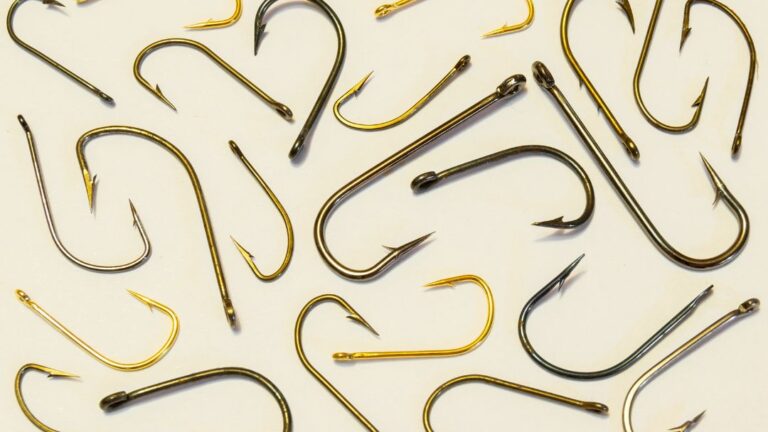Can Catfish Digest Hooks
Fishing hooks are commonly attached at the end of the fishing line to snag catfish bodies or impale them in their mouth. Anglers sometimes fail to remove this gear from the catfish’s mouth for various reasons. They often feel confused about what to do if hooks are hard to retrieve.
Can catfish digest hooks? Catfish usually don’t digest this fishing gear like foods. Instead, the hooks will remain in their stomach for a particular period and pass through their vent. The duration will vary depending on the hook type, size, and material.
Why Do Anglers fail To Remove Hooks From The Catfish Mouth?
Sometimes, you catch the wrong catfish. But the hook might not be coming out from the fish.

01. Breakage Of Fishing Line
Sometimes, your fishing line may break underwater while fighting against the catfish. It can happen for two reasons.
If the catfish has too sharp teeth, it may grab the hook too firmly. The fishing equipment will be difficult to retrieve.
Alternatively, you may place the fishing line into the structure at the bottom area of the water. It has components such as creek and river channels, points, flats, humps, etc.
This may cause the fishing line to break, but the hook stays inside the catfish’s mouth.
02. Too Tight Hook
Have you attached the hook too tightly? If so, catfish have a high chance of swallowing the entire hook.
You can’t retrieve the hook as it will harm the fish or even cause death. It is best to leave the fishing gear.
03. Giant catfish
Large catfish can be as big as 220 pounds. If this type of massive specimen accidentally bites your hook, you should not fight further. You will otherwise land into further problems.
Leaving the hook inside the fish’s mouth is better. Just release the fishing equipment by cutting the fishing line.
Can Catfish Digest Hooks?
Like other fish, catfish have a strong digestive system. They can easily digest stones, shells, and many other hard objects.
Their small anal vent will pass most things. If something is not digestible, they will just simply expel it through their cloaca.
But giant catfish have a slightly different eating behavior. Their big anal vent will pass the older meal if they recently ate a new meal.
However, if the giant catfish doesn’t get a new meal, it will slowly digest the meal along with the hooks.
Most modern hooks are made of hard objects. They are primarily indigestible.
But the strong digestive system of catfish will release the hooks through the cloaca after holding the fishing equipment for a particular period.
How Long Does Catfish Take To Digest A Hook?
There is no exact time regarding the duration to digest a hook. Depending on the following factors, it may take around a few months to a few years.
Is The Hook New Or Old?
Older hooks are easier to digest than new ones because they have a corroded and weakened body structure.
They become brittle. Catfish can easily break them down through their digestive system.
Rust or other debris on the old hook’s body allows catfish easily dislodge it.
But newer hooks have robust construction. Catfish will struggle to shake them loose.
What Material Is Used In The Hook?
Anglers use a wide range of hooks, such as circles, treble, Kahle, and high-carbon steel hooks for catching catfish.
They are made of various materials. Modern hooks are made of high-carbon steel, stainless steel, or titanium. This type of hook is time-consuming to digest.
On the contrary, some catfish hooks are made of old wires, mainly low-grade steel or iron.
This type of hook is prone to rusting and corrosion faster. They can break down to a fish gut more quickly than modern hooks.
How Large is The Catfish Hook?
Catfish hooks can be anywhere from the smallest (size 32) to the largest (size 19/0).
Larger hooks are more difficult to digest than smaller hooks due to their size and shape.
The entire hook will take a long time to pass through the fish cloaca.
Are You Catching Catfish From Saltwater Or Freshwater?
Saltwater is typically more corrosive than freshwater. It causes faster corrosion and rusting issues in hooks.
The hook will become loose and weaker. This allows catfish quickly pass through its cloaca.
Can A Hook Harm A Catfish If Swallowed?
Most catfish are likely to be okay after swallowing the hook. They will slowly pass it through their vent.
However, catfish may sometimes face a few problems if they eat some specific hooks.
Hook Poisoning
Have you used tin-cadmium-based hooks for catching catfish? This type of catfish contains toxic heavy metals.
They can damage their liver, kidneys, and other vital organs due to cadmium poisoning.
It will interfere with their reproductive systems, growth rates, and immune function. Catfish may even die from cadmium poisoning.
It is always best to avoid using tin-cadmium fishing hooks to catch hooks.
Blocked Esophagus
Is the fishing hook lodged in the esophagus or tonsils in the back of the catfish’s throat? If so, it may struggle to eat regular food.
It usually occurs if you use incorrect hook size or improper hook settings.
Besides, using barbed hooks also leads to this problem. If you fish with the catfish for too long, the fishing gear might get stuck into its esophagus
How Long Does A Catfish Live With A Hook In Its Mouth?
Most catfish either shake out hooks within a few weeks. Or, they pass them through their small vents after a few months.
But sometimes, they may have to live with the stuck hook in their mouth. The fishing gear might be penetrated through a particular location of their mouth.
This injury will destroy the normal tissue of the particular area. It will gradually lead to fibrous tissue, irritate catfish, and disrupt its regular eating habit.
If the hook still is not removed or passed through the anal vent, the wound will worsen day by day.
It will create an opening for bacteria and other microorganisms to enter the body, potentially causing infection.
The catfish will die after a certain period as it gradually becomes weaker.
Should You Remove Swallowed Hook Or Keep It Inside The Catfish?
It generally depends on how deeply the catfish has swallowed the hook.
If the hook is deeply embedded in the fish’s mouth, it is highly risky to take it out.
The hook might be firmly stuck in the fish’s mouth. You may need to put in additional force to pull out the fishing gear. This may cause injury to various internal organs of the catfish.
As long as you can pull out the hook without harming the fish, you can do it. This may take several hours when doing it with special caution.
But if you think the catfish is likely to hurt heavily, avoid pulling out the hook. Simply cut the fishing line with scissors.
What To Do If A Catfish Swallow A Hook?
If the hook has not yet reached into a catfish’s stomach, you can retrieve it.
You must be cautious enough to carefully pull the hook from the catfish’s mouth without harming it anyway.
The followings are the steps to remove a swallowed fish from a catfish’s mouth.
Step 01: Determining The Hook Location
The first job is determining how much the catfish has swallowed the hook in its mouth.
Is it gone too far already or near its mouth?
Also, identify whether the hook is wholly or partially stuck inside the catfish’s throat.
Step 02: Testing The Hook Position
If the catfish partially swallowed the hook, you can move it to and fro and take it out.
Be extremely cautious to avoid harming the fish.
But it is not as easy as you think. The small protrusion or ridge is located on the shank of the hook.
It is angled back towards the shank. This makes the hook hard to remove once it sets.
Step 03: Taking Out The Hook
Removing the hook by hand might be tricky. You can utilize needle-nose pliers or fish hook removers if the fishing gear is entirely swallowed.
Grip the hook firmly with the pliers and gently twist and pull until the fishing equipment is freed from the fish’s mouth.
Be gentle and avoid putting too much pressure on the hook or the catfish’s mouth. It will otherwise cause further injury or harm.
Step 04: Releasing The Catfish
After taking out the hook, immediately cut the line with a pair of scissors.
Make sure to release the fish quickly and gently. This will prevent unwanted body stress and keep the catfish safe.
Conclusion
Charles Kirby invented the first fishing hook in the 1650s. This modern steel hook has a unique shape with an offset point. If you have been in the fishing field for several years, you have once experienced your hook getting stuck in the fish’s mouth.
Hooks are generally inedible items. They contain metal parts. Catfish have strong stomachs. After a particular period, they can release the metal hooks through their small anal vent. If the hook is heavily stuck, avoid forcing it to pull out. It may harm the catfish and injure it.






